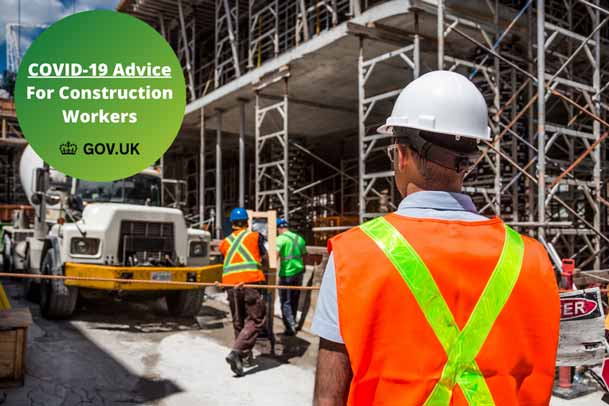Site Operating Procedures during Covid-19

COVID-19 pandemic – Site Operating Procedures (SOP) Version 5 – 04 July 2020
04 July 2020
To minimise and limit the spread of COVID-19, the UK government has introduced a number of measures for individuals and organisations. However, the government confirmed many construction-related projects are essential services—including critical maintenance, building safety inspections and emergency repairs. With this in mind, construction businesses are permitted to continue operations, as long as they implement a variety of site procedures to protect their employees and minimise the risk of spreading COVID-19.
If your construction business fails to comply with these procedures, the government could require you to shut down. The following guidance will help to ensure that your business is meeting site standards, keeping employees healthy and promoting continued operations during these unprecedented times.
Site access points
In regard to controlling your construction site’s access points, be sure to implement the following measures:
- Reduce site traffic – Prohibit entry from any non-essential visitors. In addition, utilise staggered start and finish times for your workers to limit site congestion and physical contact. Further, restrict the number of people in attendance at any site inductions, and consider holding them outdoors whenever feasible.
- Practise social distancing – Consistently monitor site access points to ensure social distancing guidelines are being met. This might require changing the number of available access points on-site. If any work procedure requires the use of a vehicle (eg a forklift) on-site, have the driver remain inside the vehicle—if the load will allow it—to reduce physical contact between staff.
- Prioritise sanitation – Require employees to wash their hands before entering and after leaving the worksite, as well as before and after handling all goods, materials and equipment. Routinely clean any common contact surfaces on-site (e.g. scanners, turnstiles, screens, telephones and desks). Lastly, be sure to temporarily remove or disable any site entry systems that require skin contact (e.g. fingerprint scanners).
Canteens and eating arrangements
Although construction sites are usually required to provide employees with a means of heating food and making hot drinks the government confirmed that these exceptional circumstances call for such equipment to be removed from the worksite where it is not possible to keep the equipment sanitised at all times.
In addition, it has been suggested that employees do not leave the worksite to eat during this time – bringing pre-prepared meals and reusable drinking bottles from home instead. Apart from these changes, make sure you promote the following canteen and eating arrangements at the worksite:
- Keep it clean – Only allow employees to eat in designated areas. Provide hand cleaning facilities or hand sanitiser stations where workers are permitted to eat, and ensure employees clean their hands before and after eating. All eating areas should be thoroughly cleaned after each break and shift—this includes chairs, door handles, vending machines and payment devices. If you provide a drinking water station, implement enhanced cleaning measures to keep the tap sanitised.
- Limit physical contact – Make sure you stagger break times to reduce congestion and physical contact in eating areas. Require workers to keep at least 2-3 metres of distance between one another while eating.
- Be cautious with catered food – If you have food catered for your employees, use extreme caution. Only allow pre-prepared and wrapped food to be catered. Do not use eating or drinking utensils from the caterer. When paying for food, use a contactless card as much as possible.
Welfare facilities
Ensure you meet the following welfare facility standards at your worksite:
- Toilet facilities – Limit the number of employees permitted to use the toilet facilities at any one time. Be sure to utilise an enhanced cleaning regime for all toilet facilities – specifically focusing on door handles, locks and the toilet flush. Lastly, try to avoid using portable toilets on-site as much as possible.
- Changing facilities, showers and drying rooms – Similar to toilet facility standards, try to restrict the number of employees using each facility at one time, and introduce enhanced cleaning procedures. In addition, stagger start and finish times for employees to further limit facility congestion, and consider increasing the number of facilities available on-site to reduce physical contact between staff.
- Prioritise handwashing – Offer a variety of handwashing stations with adequate soap and fresh water, providing hand sanitiser stations when fresh water is not available. Regularly clean the handwashing and sanitising stations, and replenish the soap and sanitiser whenever necessary.
Travel to the site
Whenever possible, encourage employees to travel alone to work, using their own personal means of transport. If employees typically use public transport to get to work, they should consider walking or cycling if the travel distance is feasible.
Be sure you have suitable arrangements on-site for parking cars and bicycles in a way that limits physical contact between staff. Also, make sure you consider how an employee that falls ill on-site would be taken home.
